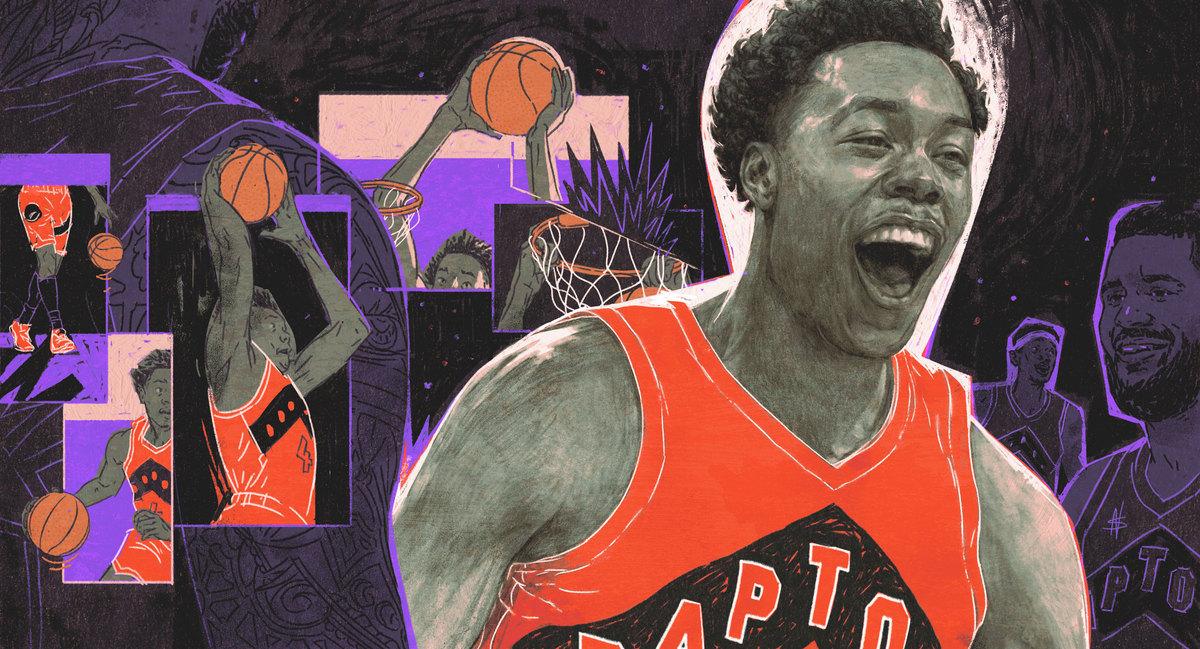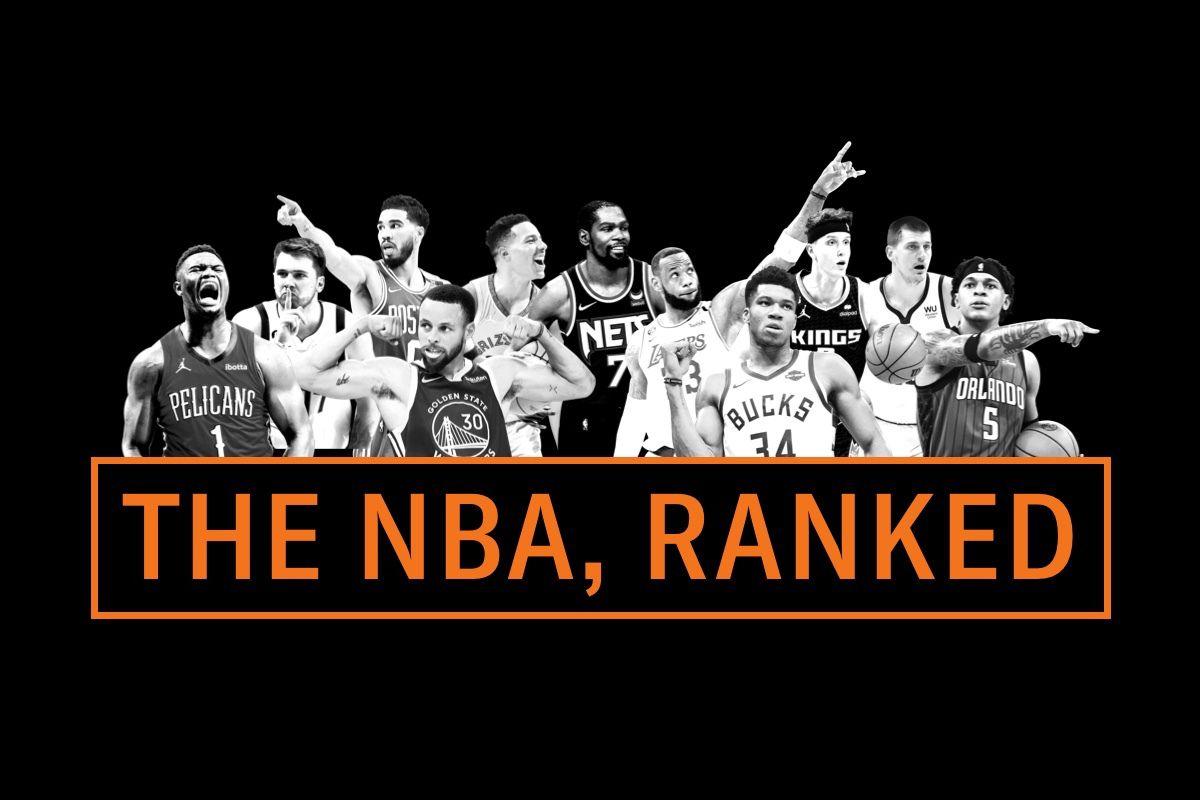Is Scottie Barnes Ready to Spread His (Big) Wings?
The Toronto Raptors hold all the cards heading into the NBA trade deadline. Will they stand pat and keep adding to their collection of versatile forwards, or will they overhaul the roster and let Barnes lead them into their next era?Months ahead of hearing their names called at the 2021 NBA draft, a group of young prospects is hiking the Ennisbrook Trail, a 10-minute drive from P3, a sports performance facility in Santa Barbara, California. Some wonder what they’re doing here. Others are winded. Scottie Barnes, stride by enthusiastic stride, lunges ahead of the pack, enjoying the climb as much as the breathtaking view at the end: Montecito mansions—including Oprah’s—clustered through the redwoods. Staring out to the horizon, the world at his feet, Barnes is hopeful. He FaceTimes his mom, pointing out houses that could one day be theirs.
On the climb down, Barnes asks Jon Flake, P3’s lead performance specialist, to stop for smoothies. As the group walks into the store, Barnes sees a woman falling down the stairs. “Oh my God,” Flake recalls Barnes shouting while sprinting to her side and picking her up. Noticing a scrape on her knee, Barnes dashes to a Starbucks next door for napkins.
“A lot of guys are too cool,” Flake says. Or too tired after a hike. But Barnes, happier to dish dimes than score, derives energy from helping others.
Jalen Suggs, who hit one of the biggest shots in NCAA tournament history a few months prior to the draft, was a shoo-in at the no. 4 pick, a scorer and creator to counterbalance the Toronto Raptors’ stockpile of long, versatile, defensive-minded wings. But the Raptors doubled down on the latter with Barnes, entranced by the joy emanating from the Florida State forward’s 6-foot-8 frame. The surprise pick became the 2022 Rookie of the Year, flashing the potential to become a culture-setting pillar of the future.
Barnes displayed a little bit of everything in his first season with Toronto: the lateral quickness to keep up with guards, the strength to bruise with bigs, a natural playmaking feel, and uncanny touch. The keys to the franchise remained in the hands of championship holdovers Fred VanVleet and Pascal Siakam, but the hope going into the 2022-23 season was that Barnes’s development could bridge the past with the future. He is, in the words of Raptors veteran Thaddeus Young, being groomed for leadership.
Barnes craves that responsibility. “He understands how his life was, how it’s changing, and what it could change to,” says Rae Miller, an assistant coach at Montverde Academy, where Barnes played his senior year. “To go through adversity and not have everything the way you would hope for it to be, and he decided at a very early age that he’s not going to let his circumstances determine the future. He is going to determine what future he has, how he goes about his life. And he wants to live his life in a very positive and fulfilling way.”
But Barnes struggled early in his second season. After being asked to call his own number more, Barnes, like his team, at times looked sluggish, hesitant, and lost. Both the team and player have picked it up in the new year, but the Raptors are still 12th in the East—two spots out of the play-in tournament field—with the trade deadline approaching.
With several key players able to hit the free-agent market over the next two summers, should Toronto blow it up and retool around Barnes? The answer may hinge on whether Barnes can not only serve as a bridge to the future, but be the face of the franchise’s next era.
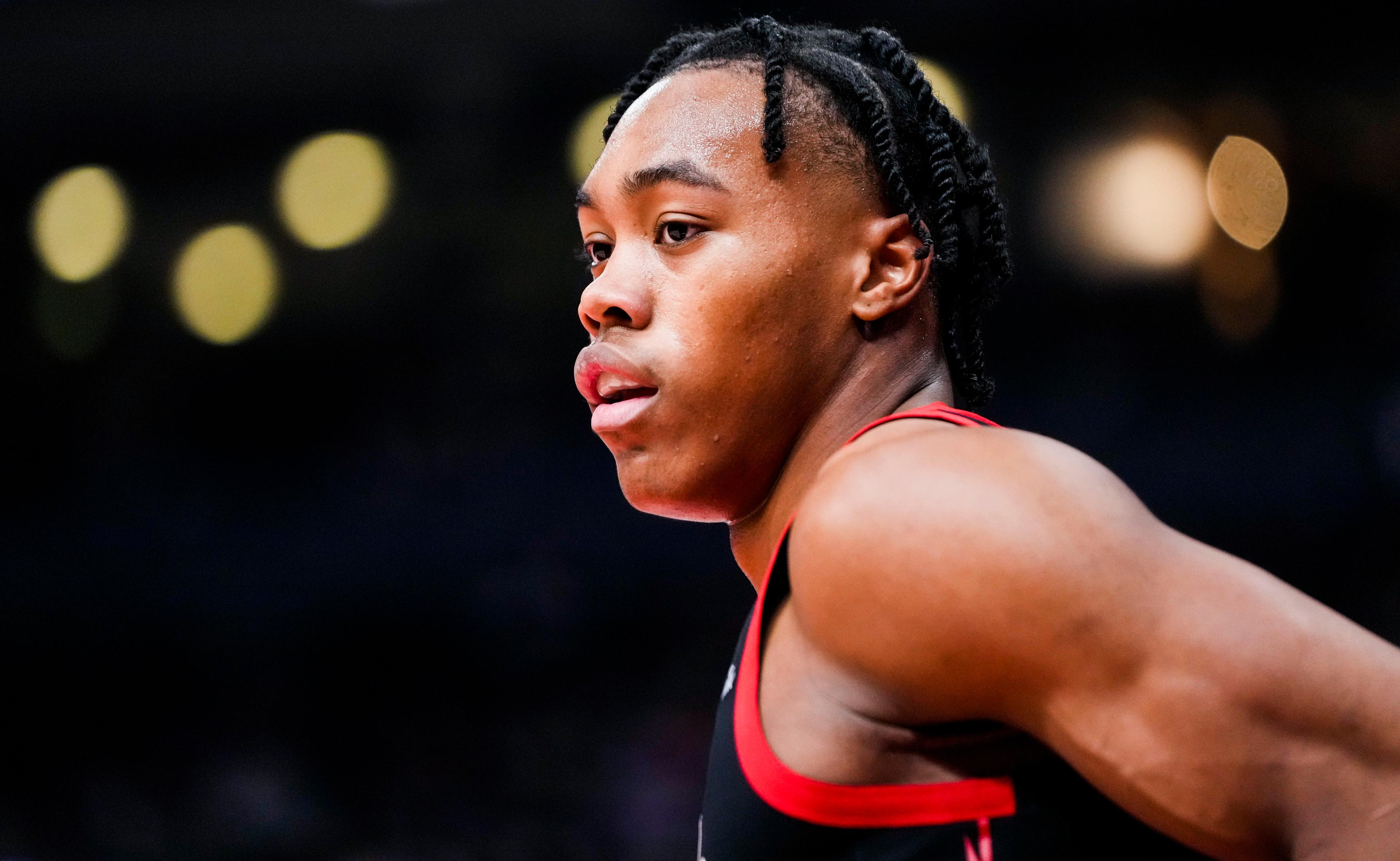
Barnes’s mother, Kathalyn Wilkins, is the source of his grateful nature. He describes her as someone who “bursts out in tears for the littlest things.” Raising four kids in West Palm Beach, Florida, a bridge away from the rich enclave of Palm Beach, famous for housing Donald Trump’s Mar-a-Lago resort, Wilkins “sacrificed so many different things,” he says. But life was hard. They moved around a lot, and Barnes’s parents were constantly fighting.
Barnes was in fifth grade when he met John Simpson, a local youth coach. Simpson watched Barnes play at a Salvation Army league in Fort Lauderdale and saw visions of Magic Johnson. He wanted Barnes to play for his Wellington Wolves, so he arranged to meet Barnes at a local McDonald’s. He brought his son, Jason, who thought Barnes, unusually tall for a fifth grader, was an adult. Jason recalls, “I was like, ‘Yo, do you have games on your phone?’ He was like, ‘Yo, get out my face.’”
When they became teammates on the Wolves, Barnes and Jason developed a friendship. The first time Barnes came over to the Simpson household, John brought home wings from Publix. Barnes ran to the table and touched all the drumsticks. “What are you doing?” Jason recalls his dad asking. The drumsticks, Barnes explained, were his favorite. “I just wanted to get them before anybody else,” Jason recalls Barnes saying, “because I didn’t know if there was going to be any left by the time I got to eat.” John explained to Barnes that he wouldn’t have to worry about that there.
Barnes, craving stability, started going to the Simpson household more, sleeping over regularly. He wanted to ease the financial burden on his mom, so eventually, he moved in. “They welcomed me,” Barnes says. “They’re family. They helped me with so many different things a day. Jason is the person I talk to most. He’s like my real brother. He’s like blood.”
The Simpson family, on the other hand, would insist Barnes’s connective nature helped them. Barnes forced Jason to get out of the house, taking him to his friends’ houses, the skating rink, and the basketball court, where Barnes spent every morning before school. “Growing up around Scottie, he changed my perspective so much, showing me how blessed I am,” Jason says. “He also instilled more of a—for lack of a better term—dog in me. Growing up privileged, you can get a little complacent.”
Barnes’s high school team at Nova Southeastern University School was also tight-knit. He wouldn’t have it any other way. Even on Barnes’s quieter, more subdued days, NSU coach James Carr noticed that he would get himself into a better mood by trying to help someone else. “He’d always try to pick up a teammate that didn’t play well or a guy that was struggling,” Carr says.
“Even those days where he may not be feeling the best just because of something that happened to his little brother or his mom or somebody,” says Trey Doomes, his teammate, “we were always there to pick each other up.” Doomes remembers gifting him NBA 2K for his birthday. “We all took him out and poured as much love into him as we could, just trying to cheer him up.” Barnes lit up when he received the gift, breaking into a dance.
In 2018, NSU shocked the high school hoops world by making it to the national championship game against the powerhouse Montverde Academy. Barnes, a sophomore, seized on his target: RJ Barrett, the no. 1 player in the U.S. Barrett, playing in his final high school game, led Montverde to a sizable halftime lead.
Barrett had everything Barnes wanted—and, at that moment, Barnes wanted to stop him. “It’s that quiet fury of him,” Carr says. “Whoever’s getting you, he wants to go get.”
But in the second half, Montverde opened the floor for Barrett, and the Duke commit took advantage of Barnes’s overzealousness with his quick first step and strength. As the game slipped away, Barnes gave up an and-1 to Barrett and screamed at the ref, picking up a technical foul out of frustration—an outburst similar to the ones Raptors fans have become accustomed to this year. Confronted with the gap between him and Barrett, between NSU and Montverde, Barnes was, in his own words, “sick.”
Miller, an assistant coach for Montverde, watched. “Even during the handshake line, you could see he was visibly upset about losing,” he says. “Knowing him now, I know that in his mind, he was working on the fix. ‘How am I going to make this better? How am I going to win the next time we play?’ That’s how he operates. That’s who he is. He’s a winner.”
This is how Barnes has always improved: He sets a high target and embraces the climb. The only problem: Montverde was stacked. NSU lost to them again the next year, and Carr was fired, leading Barnes to look elsewhere to finish his high school career.
Barnes, already a high-rated prospect, piqued Montverde’s interest with his ferociousness. At an EYBL camp the next summer, a Montverde coach approached him about joining them. “I don’t want to join Montverde,” he told the coach. “I want to beat them.”
It’s that quiet fury of him. Whoever’s getting you, he wants to go get.James Carr, NSU coach
“Losing to them,” Barnes says now, “it just really broke my heart, my soul.”
At the USA U16 camp that summer, he roomed with Cade Cunningham, who extolled the wonders of Montverde’s developmental program and put Barnes on the phone with Kevin Boyle, Montverde’s head coach.
“I think that’s what did it,” Cunningham says. “He wanted to continue to get better.”
Barnes arrived in Montverde, a three-hour drive from West Palm Beach, in September. The trappings—living in a dorm, playing alongside future NBA players, practicing in a $6.5 million facility—could take some getting used to. Miller, toward the end of an early-season practice, was impressing this upon returning players, like Cunningham and Moses Moody: It was time to step up and lead, to keep their shirts tucked in and cell phones tucked away, and to impart professional habits on the new arrivals.
Barnes wasn’t happy with the speech, and after the gym cleared out, he wanted Miller to know it. “So,” he asked, “I’m not a leader?”
“He wanted that responsibility,” Miller says. “He wants to be challenged. He wants you to give him the opportunity to be your leader. And if you give him that opportunity, he’s going to repay you tenfold.”
Barnes got banged up before the season began, so he tried to set a standard from the sidelines. In one practice, when a younger teammate didn’t attack an open lane for a layup with the appropriate ferocity, he screamed across the gym.
“‘If you’re going to play like that’—and he used some other words—‘we can’t win,’” Miller recalls Barnes saying. “I remember the kid turning around and looking back at him like, ‘Holy shit, did he just say that to me?’”
“Some people, they get hurt, they separate themselves from the group, but he never did that,” Cunningham says. “He was super locked into practice, into each player, how everybody was doing.”
Later that season, the team got together on the day before Thanksgiving to watch Dayton send Kansas, the no. 1 team in the country, to overtime. When the game cut away to a commercial, Barnes got up in front of his teammates and told them they all had to cheer for Kansas. Kansas, he explained, is us. “They’re the number one; we’re number one,” Miller recalls. “If we don’t cheer for them right now, we’ll never do it for ourselves.” When the game came back on, the whole team was rooting for Kansas.
“He believes that whenever you’re at the top, there’s going to be adversity,” Miller says. “And if you don’t pull together as a team, you can’t win. He changed everyone’s mindset at that point.” Montverde went undefeated that season.
In a letter of recommendation for the Morgan Wootten National Player of the Year award—granted to the best high school players in the country—David Bernatavitz, Montverde’s dean, wrote, “What separates Scott from other great athletes or famous students, and community-minded individuals, is the joy that he brings to everything he does. Henri Nouwen said, ‘Joy does not simply happen to us. We have to keep choosing joy every day.’ With everything that has transpired in Scott’s life, he could choose anger and resentment. He could have chosen a path much less positive. Scott has chosen to bring joy to everything he does, and he lifts others around him to that same state of joy.”
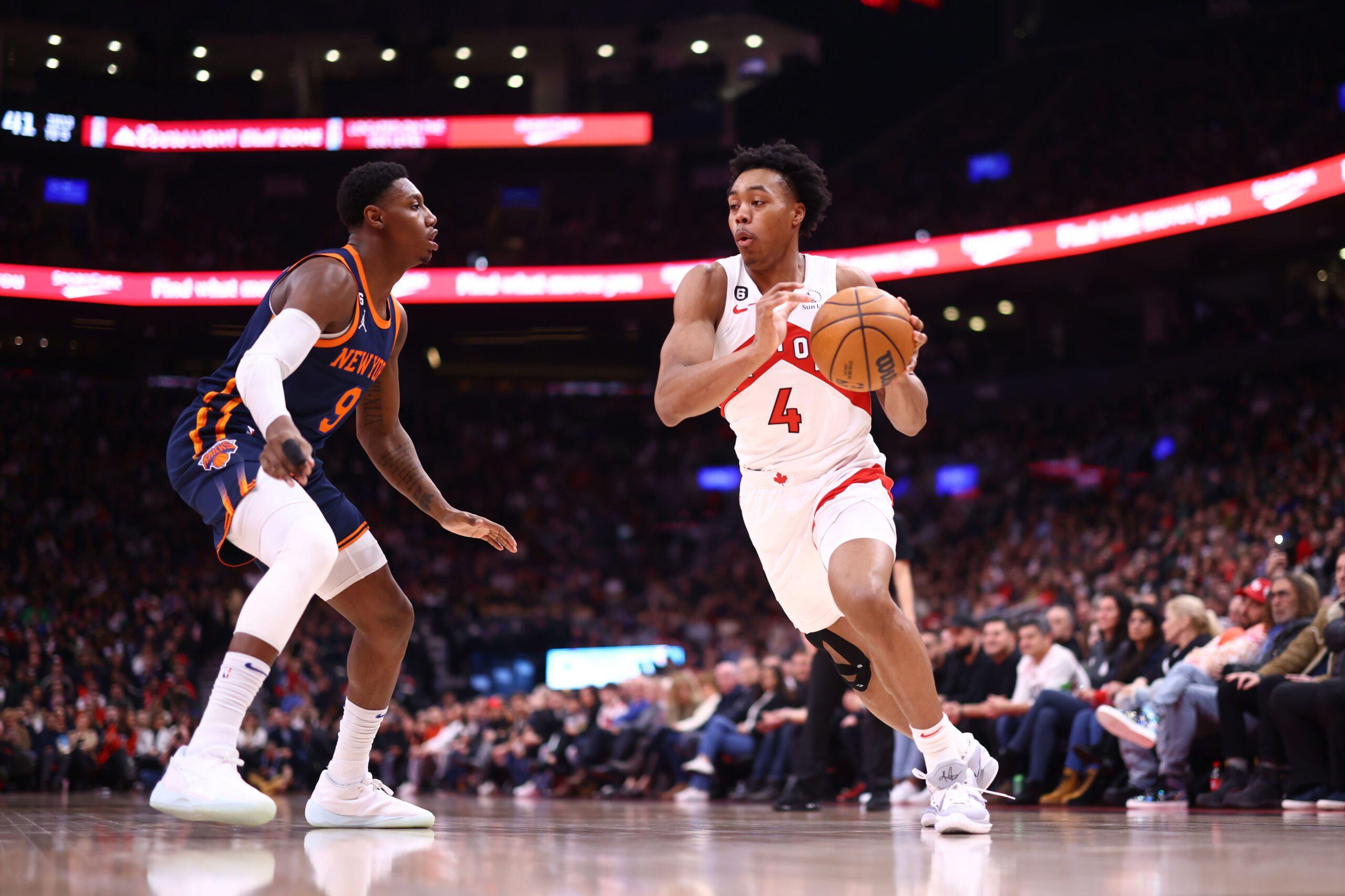
If you were to design an ideal modern basketball player in a lab, they’d look like Scottie Barnes: 6-foot-8 with a 7-foot-2 wingspan and the third-highest standing vertical at the 2021 draft combine.
In the last half decade, the playoffs have become an increasingly detail-oriented chess match, with coaching staffs filled to the brim with strategists exploiting every weakness they can find. The value of multipronged players without any obvious flaws has skyrocketed. But wings like Cam Reddish and Kevin Knox II, former lottery picks who could be easily chosen as second-rounders ahead of the 2023 trade deadline, prove that physical versatility gets you only so far. You need intelligence and effort—characteristics that Barnes has flashed on and off the court.
Kristine Walsworth, Barnes’s English teacher at Montverde, conducts a Winnie the Pooh–themed learning survey with every class “to tell you whether you are an abstract or a concrete learner,” she says. “Whether you are a sequential or random learner.”
Barnes’s test results came out at the “dead center of the line,” a.k.a. Christopher Robin. “He can learn in every way possible, which makes him such a versatile person,” Walsworth says. “It’s been fascinating to me also to apply that to the way that my elite athletes play.”
Scottie is the guy showing up on day 10 and yelling and clapping and getting people fired up. He’s the one that’s bringing the energy when everyone else doesn’t have it anymore.Jon Flake, P3 lead performance specialist
Barnes’s ability to read the floor and time his movements fits perfectly in Montverde’s spaced-out, read-and-react systems, in which he filled multiple roles. He knew when to crash the boards and how to perfectly time a cut or a pass, palming rebounds with his 10-inch-wide hands and flinging the ball across the court in transition. He showed flashes of split-second decision-making ability and feel that can often serve as the only counter to the sophisticated defenses he’d face in the NBA.
Barnes also has an unusually high motor, allowing him to cover multiple places in one possession. P3’s fatigue-monitoring technology showed Barnes could go longer and harder than his peers, a limit he pushed against. Twice a week in the spring of 2021, a group of draft prospects would play five-on-five. Barnes wasn’t among them. As a high-rated prospect, he was only allowed to participate in drills, to avoid injury risk. After failing to convince the trainers to let him play, he started to referee, running up and down with the action, calling fouls, and blowing the whistle hanging from his neck.
“If someone rips off a sick dunk in his live game, he’s sprinting down the courts, giving him a high five,” Flake recalls. Sometimes Barnes directed action, telling players where to go and whether they missed screens.
“Scottie is the guy showing up on day 10 and yelling and clapping and getting people fired up,” Flake says. “He’s the one that’s bringing the energy when everyone else doesn’t have it anymore.”
P3’s workout plan toggles high- and low-load days to minimize the risk of burnout and injury. But a few weeks into camp, Flake noticed a troubling pattern. Barnes would move sluggishly the morning after off days and complain about aching knees.
When Flake asked Barnes whether he was getting in extracurricular work, he denied it. A few weeks later, he found out someone with access to the UC Santa Barbara campus gym was unlocking it for Barnes, who would shoot late into the night.
After finding out Barnes was putting in extra work, Flake sat him down and tried to explain the importance of pacing himself.
“Look, I get it,” Flake says, recalling his overall message to Barnes. “That’s part of what’s made you great, but we’re trying to build in a very structured way, and we’re doing this for a reason.” Barnes bought in, incorporating more rest and recovery into his routine, and realized he felt stronger.
When Barnes arrived in Santa Barbara, his vertical was already off the charts. By the end of his six weeks at P3, Barnes’s hip abduction, lateral movement, and hip extension velocity—all qualities that allow a player to quickly move sideways to keep up with opposing guards—improved by 5, 6, and 17 percent, respectively. In the weeks leading up to the draft, nothing about Barnes suggested there was a limit to the direction his game could go.
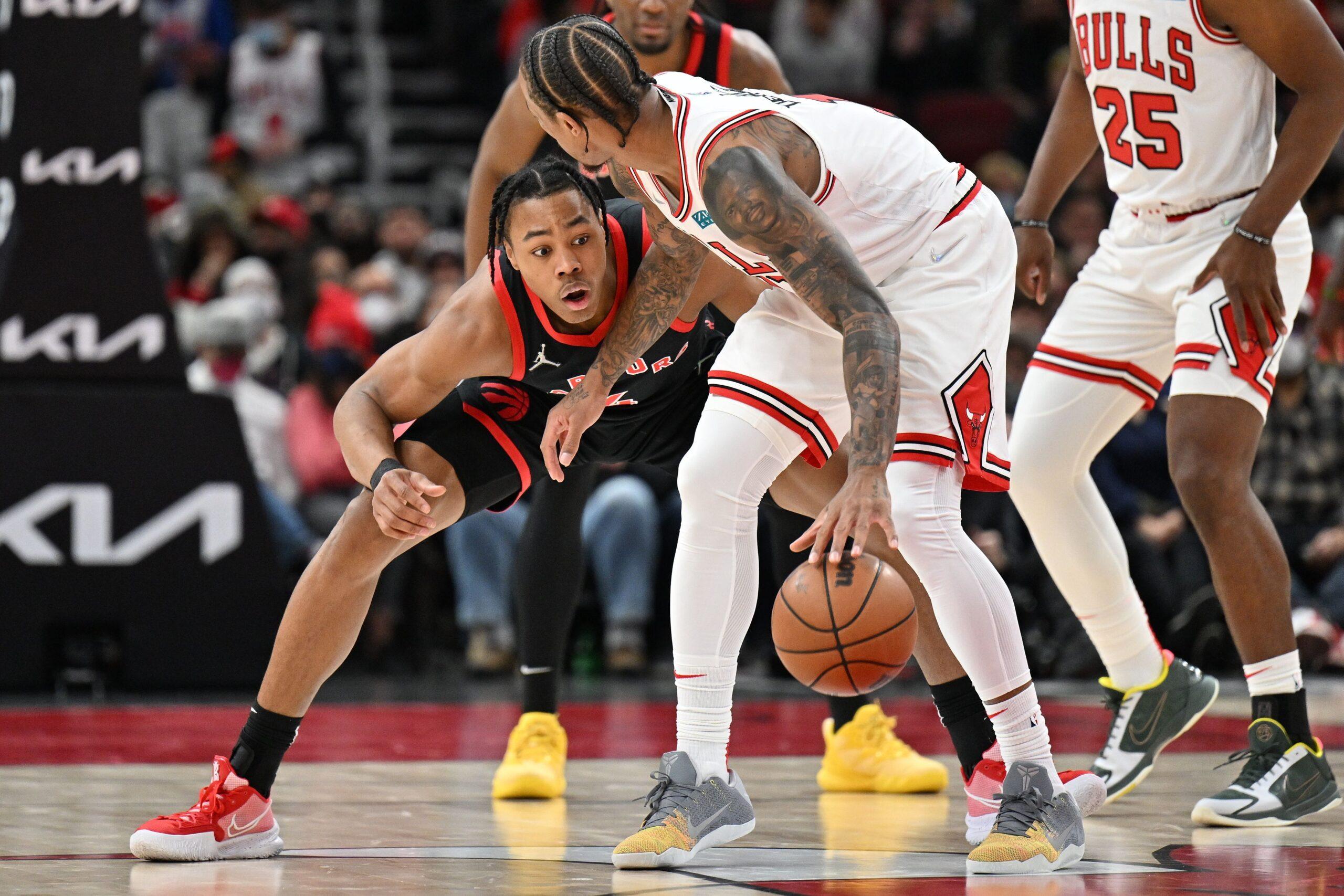
The Raptors spent the 2020-21 season in Tampa, about 1,000 miles away from their raucous Toronto fan base. The temporary relocation, triggered by COVID-19-related international travel restrictions, left the team burned out. They slogged through the season and missed the playoffs for the first time in team president Masai Ujiri’s tenure. The only silver lining: their highest pick in the draft since Andrea Bargnani in 2006.
When Barnes arrived in Tampa for a predraft interview, he leaned down and wrapped the worn-out staff in his warm embrace. Over the course of the conversation, the two sides realized they shared values: an unbridled enthusiasm for work, a serious approach to basketball, and little tolerance for idleness, according to someone familiar with the meeting. When the front office relistened to the interview, they counted how many times Barnes said the word “win.” It was 27, three times as many as any other prospect they interviewed.
Fans critical of the selection eventually saw what the Raptors saw: a sprawling injection of energy who uses his long arms to deflect errant passes and his long legs to sprint past opponents in transition. The Raptors, a collection of entangled limbs, ranked second in the NBA in second-chance points and points off turnovers in 2021-22. Barnes, a creator and beneficiary of that chaos, flowed and cut his way to 15 uber-efficient points and 7.5 rebounds per game, smiling and dancing all the way through.
I don’t really stress about things. I just let things go. I’m just a carefree guy. The only thing that makes me really sad is probably losing.Scottie Barnes
“He does a lot of things that don’t show up on the stat sheet, and he does them at such a high level to the point where it just exceeds all expectations,” says Young, the Raptors’ 16-year veteran. “He’s a guy that’s going for a rebound; he can play point guard position 1 to 5.”
Around the 40-game mark, Raptors coach Nick Nurse braced for signs of fatigue. But Barnes only got stronger as the year went on, refining his decision-making and expanding his shooting and ballhandling. “I don’t know if I’ve seen that before from a rookie,” Nurse says.
Through the season, Barnes’s game was complimented by many NBA dignitaries, from LeBron James to Kevin Durant, but it was the affirmation of Magic Johnson that meant the most to Barnes. “There’s a lot of showtime in him,” Johnson said, seeing flashes of himself in Barnes’s versatility and unselfishness. “He can do everything on the basketball court, much like myself. He’s big. He’s strong. He’s physical. He can make his teammates better like I was able to do, and he’s a matchup nightmare like I was.”
After the Raptors gave the Sixers a strong fight in Toronto’s loss in the first round of the playoffs, the possibilities looked as high-reaching as Barnes’s 9-foot standing reach. The Raptors had their formula, with Barnes as its crown jewel. Teams around the NBA started to wonder: Is Barnes the future? Ujiri, who once said the year Toronto spent in Tampa would set the franchise back for years, put a new spin on the ordeal this summer: “Even when we lose, we win.” General manager Bobby Webster, during a summer league broadcast, acknowledged that the Raptors had a type, and he spent the offseason building a roster with 10 players between 6-foot-7 and 6-foot-9.
The day after the season ended, Barnes texted his personal trainer, Brian Macon, with a long list of things he wanted to improve: go-to moves, ballhandling, catch-and-shoot 3-pointers, off-screen shooting, free throw shooting, floaters, and layups. “We have to be very organized on how we work. It’s hard to get everything in one session,” Macon says. Macon designed multipronged drills to keep Barnes from getting used to doing one thing. “He might drive, get to the basket, finish, sprint to the corner, catch, and shoot. He may get a handoff, come off the handoff, and get another shot,” he says. “So a continuous drill, where he has to score from multiple spots on the floor, which is how he plays.”
Barnes had a summer for the Instagram ages, locking up James Harden and nailing stepback 3s at Rico Hines’s popular offseason pickup runs in Los Angeles. He put “PG” in his Instagram bio. All the while, the Raptors reportedly wouldn’t put him on the table in trade discussions for Durant, this generation’s best scorer.
Barnes first heard about the trade rumors when he was streaming a video game on Twitch. “It was just spamming in the chat,” he tells me. Picking up the phone to find out what was going on didn’t cross his mind. “The organization, myself, feel we both just got to trust in each other,” he says about that time. “We both believe in each other. We both know our goals, what we want to achieve. We both see our futures together for the long run.”
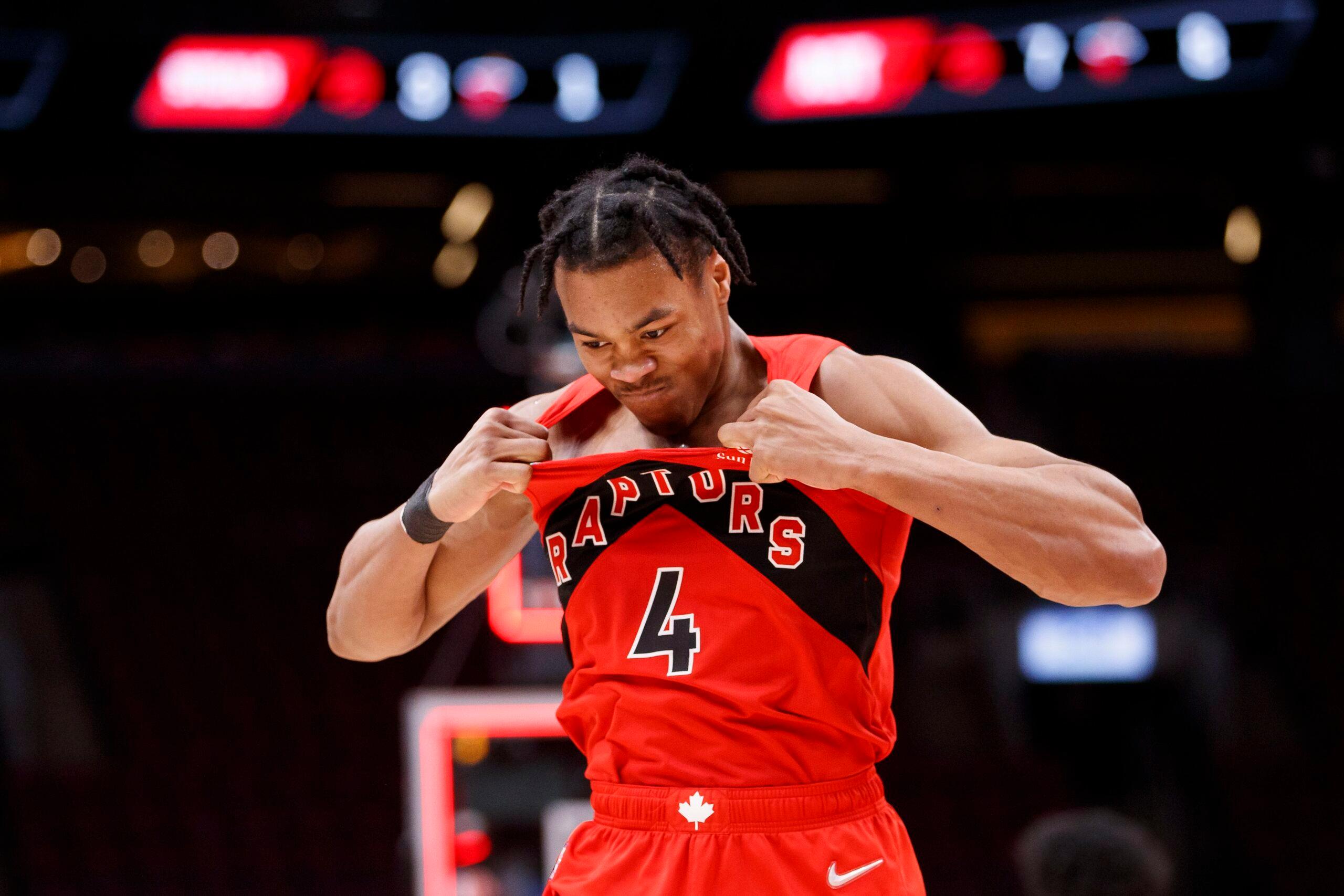
At halftime of Barnes’s first game of his second season, speed painter Jessica K. Haas painted a face over a canvas featuring the Toronto skyline. Brushstroke by brushstroke, a portrait of a screaming Barnes revealed itself in six minutes. After a string of mesmerizing stepback midrange jumpers and a 3 that night in a win against Cleveland, you could be forgiven for thinking things could come together that quickly in real life.
But in the first half of the season, Barnes fell in love with that jumper at the expense of more efficient shots. He’d spot up for 3 instead of cutting into open lanes. After an opponent missed, he’d slow down and wait for the ball instead of lunging up the court for an easy bucket. The effects corroded his shot profile, even at the rim and from midrange, where he thrived last season.
“I think that is natural for guys that come in and do a lot of work on their shooting; they want to take that work to the floor, but you’ve always got to remember that’s an extra add-on and not forget your bread and butter,” Nurse says. “The only thing that ever is going to stop him from not living up to that pressure is just not being aggressive enough.”
Barnes agrees: “I tend to get more passive at times. Well, most of the time. That’s one thing that I try to change—my mind—and keep trying to be aggressive. These guys always give me confidence to keep trying to attack, be ready to shoot. I feel like that’s one thing I just got to grow out of: being passive.”
He’s confident he’ll get there. Barnes describes himself as someone who is happy most of the time. “I don’t really stress about things,” he says. “I just let things go. I’m just a carefree guy. The only thing that makes me really sad is probably losing.”
Because of injuries, the Raptors have slotted him all over the lineup, toggling between center and point guard on an almost nightly basis. They have deficiencies in shooting, playmaking, and rim protection that Barnes and the rest of the Raptors’ many big wings haven’t been able to fill.
In December, the Raptors went on a six-game losing streak—the longest Barnes has ever endured—and the toll is evident. His winning smile and exuberant full-court sprints have been replaced by sluggish jogs and frustrated outbursts in the direction of referees, teammates, and himself.
Opposing teams are curious about how Toronto’s front office will respond to the disappointing season. Ujiri abhors stagnation, but his tenure has been marked by fielding competitive rosters and looking for incremental gains through the draft, free agency, and the trade market. VanVleet and Gary Trent Jr., who could hit the open market this summer if they choose, headline ongoing trade rumors. The Raptors could also deal OG Anunoby and Pascal Siakam, potential 2024 free agents, and opt for a full-scale rebuild around a high lottery pick that fits Barnes’s developmental time line.
Toronto is reportedly expected to keep assessing what they have until the final week of the trade deadline. Lately, Barnes has been giving them new material.
About 30 games into the season, opponents started taking note of Barnes’s sub-30-percent 3-point stroke. Opposing defenders like Myles Turner, Brook Lopez, and Jusuf Nurkic stay planted in the paint when Barnes has the ball, giving him an ocean of space to shoot. Instead of settling, he is dribbling into the open space, drifting naturally into the middle of the floor, where he can take advantage of his multivarious skill set. He operates like a playmaking four—setting screens, catching the ball on the roll, and making decisive plays against reactive defenses. In this role, Barnes is the connective tissue between the present and future that the Raptors envisioned, setting picks and dribble handoffs for VanVleet and Trent and cutting and crashing off Anunoby’s and Siakam’s perimeter attacks.
In January, Barnes cut down on his 3-pointers and used his long stride to fill the space he’s being given, getting to the line 5.5 times per game and averaging 18.1 points, 7.4 rebounds, and 5.6 assists, with an uptick in steals and blocks. “I like it, being able to facilitate the offense, moving it side to side, being able to go downhill,” Barnes says.
Despite Barnes’s improved play, the Raptors have gone 7-9 in that stretch. With several contract decisions looming, they still have to ask themselves if it makes sense to try to win and develop Barnes around the team as it is currently constructed. That’s the challenge of trying to do everything at once. It can be hard to find a sense of direction.
